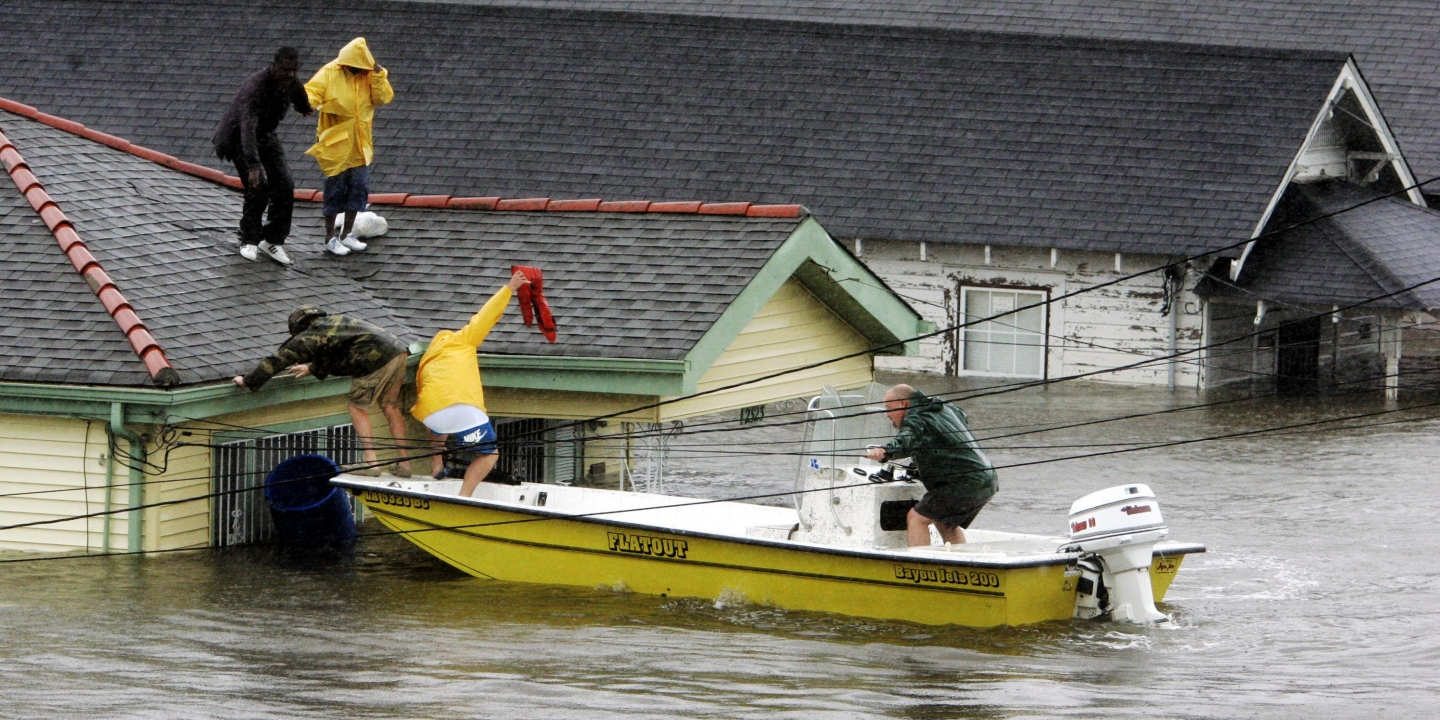AS HURRICANE HARVEY APPROACHES, TRUMP APPOINTS DEPUTY CHIEF OF STAFF WHO FAILED TO PREPARE FOR KATRINA
Lee Fang
The Intercept
Hurricane Harvey, a storm expected to bring catastrophic flooding to Texas, could be the first major disaster under the watch of President Donald Trump, attracting new attention to how the administration has staffed its emergency response teams.
Trump has faced growing criticism for leaving vacancies in many government positions, as well as apparently handing out appointments to connected Republican insiders and lobbyists over experts and well-qualified public servants. But as the administration faces Harvey, a reshuffle that’s brought Kirstjen Nielsen to the White House may raise eyebrows even further.
Until recently, Nielsen served as the top aide to retired Gen. John Kelly as he headed the Department of Homeland Security. But when Kelly became Trump’s chief of staff, Nielsen changed positions too, becoming Trump’s deputy chief of staff.
Nielsen is known in the Beltway for her close relationship with Kelly; a Washington Post story recently stated that administration officials “usually work through Nielsen, and she funnels information to Kelly, who decides what to show the president.” Less known, however, is her history as a key figure singled out by two 2006 congressional reports highlighting members of former President George W. Bush’s administration who were warned about Hurricane Katrina and failed to act.
Over a decade ago, Nielsen held the title of senior director for preparedness and response at the White House Security Council.
The Senate report, “Hurricane Katrina: A Nation Still Unprepared,” names Nielsen as among the key administration figures who failed to act on early warnings about the storm. A related bipartisan report from the House of Representatives on the government’s botched response to Katrina, “A Failure of Initiative,” similarly criticized Nielsen.
While serving in the Bush White House, the Senate report notes, Nielsen received an email from emergency planning officials six months before the storm in February 2005, warning that flooding in New Orleans “could cause similar devastation” as the tsunami that had devastated Southeast Asia the previous year.
Throughout August 27 and August 28, before the storm made landfall, Nielsen and other senior Bush aides received a flow of reports from DHS about the growing strength of Katrina, including a warning that floodwaters could overtop New Orleans’s levees. “Any storm rated Category 4 or greater,” one email from the Homeland Security Operations Center sent on August 28 warned, “will likely lead to severe flooding and/or levee breaching. This could leave the New Orleans area being submerged for weeks or months. … The magnitude of this storm is expected to cause massive flooding.”
Nielsen, the House report points out, headed Bush’s Homeland Security Council for Prevention, Preparedness, and Response directorate, a team designed to relay information from disaster response agencies to the president.
Bush and his senior aides did not act on the warnings. On Saturday, August 27, Bush spent the day vacationing at his Crawford, Texas, ranch. The following Monday, August 29, the president attended events in Arizona and California as the storm reached U.S. shores, including Arizona Senator John McCain’s birthday celebration.
“Despite the clear warnings before landfall that Katrina would be catastrophic, the President and the White House staff were not sufficiently engaged and failed to initiate a sufficiently strong and proactive response,” the Senate report concluded.
Kirstjen Nielsen attends the Annual Meeting of the World Economic Forum at the Davos Congress Centre in Switzerland, Jan. 24, 2015. Photo: WORLD ECONOMIC FORUM/swiss-image.ch/Photo Valeriano DiDomenico
The White House did not fully cooperate with the congressional investigation, leaving key questions unanswered. Then-Federal Emergency Management Agency director Michael Brown claimed that he contacted the president and his senior officials 30 times before the storm made landfall. “Because the White House refused to cooperate with the Committee’s requests, we don’t know what the President and his staff did with the information about the impending disaster from Brown and others,” the report notes.
The lack of preparation for the deadly storm led to absolute chaos on the ground as Katrina flooded New Orleans and destroyed communities along the coast. Local authorities, lacking guidance from the federal government, failed both to evacuate residents and to provide medical assistance to those stranded by the storm. Katrina is estimated to have cost nearly 2,000 lives.
In April 2007, Bush appointed Thomas Bossert to replace Nielsen as senior director for preparedness and response, one of many turnovers in personnel in the Homeland Security Council during a congressionally mandated “shakeup” of the department in the years after Hurricane Katrina. Bossert, notably, has also returned to the White House as a senior aide for Trump.
Nielsen, like many Bush homeland security officials, ended up in the for-profit security industry — in Nielsen’s case, at a company called Civitas Group LLC. Civitas, which describes itself as a “strategic advisory and investment firm serving the homeland and national security markets,” was founded by Republican lobbyist Charles Black and Samuel Berger, a former national security adviser to former President Bill Clinton.
Beginning in 2012, Nielsen served as the president of Sunesis Consulting, a consulting firm that “advises senior government officials and senior private sector officials on the development, assessment, and execution of preparedness strategies, policies, plans, tools, and tabletop exercises to prevent, protect against, respond to, and recover from all hazard events with a focus on cybersecurity, critical infrastructure, and emergency preparedness and response.” The firm, according to GovExec, won a contract last year to review the Homeland Security Department’s efforts to collect data about threats to U.S. infrastructure. She also served as a fellow at George Washington University’s Center for Cyber & Homeland Security.
Top photo: Bryan Vernon and Dorothy Bell are rescued on Aug. 29, 2005 from their rooftop after Hurricane Katrina hit, causing flooding in their New Orleans neighborhood.
___
http://theintercept.com/2017/08/25/kirstjen-nielsen-dhs/

